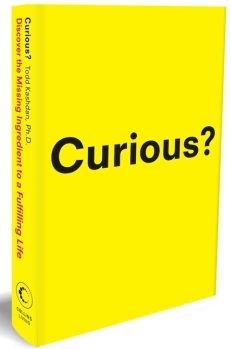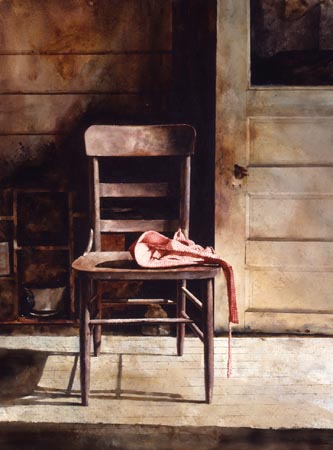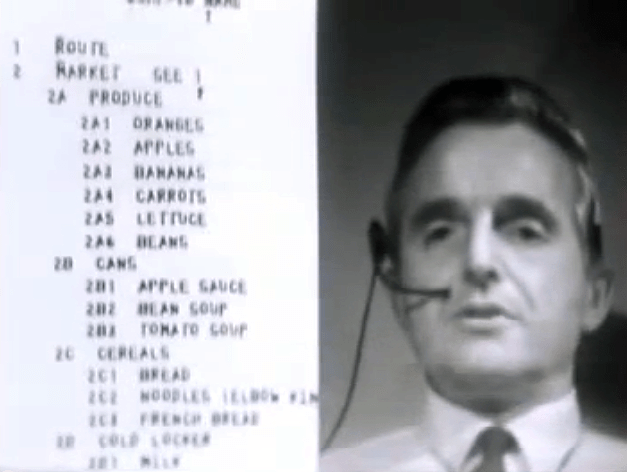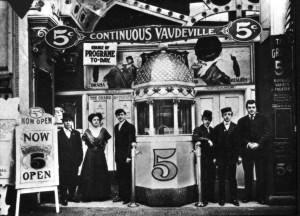Several days after his passing, bassist Charlie Haden’s website hasn’t heard the news. But I know. And a few minutes before midnight during the week after his death, I feel it in my heart. I suppose the sense of loss struck me when I listened to the first track of one of my two favorite Haden CDs. The track is a spare version of “Here’s Looking at You” from an album celebrating the songs of the 1940s, in contemporary settings. I especially like the track because it opens the album with lush strings, the simplicity of Ernie Watts’ plaintive, lovely, long tenor sax reaching from the past, nostalgic, perhaps the best thing that Haden and Quartet West recorded. Alan Broadbent, the pianist who arranged the strings, is every bit as lovely for his solo. And there’s Haden, subtle but always there, just enough bass for me to follow his line as Watts comes in for his second theme. Not quite visible, but always a presence.
Haden recorded in a lot of settings, but I think I liked him best when he played an album of spirituals with Hank Jones. Just the two fo them, sounding as if they’re in an old church in South Carolina or Mississippi instead of Radio Canada’s Studio B in Montreal. “Steal Away” is an album of “spirituals, hymns and folk songs.” It’s one of my very favorite albums, and after , their work together on “We Shall Overcome” gets me every time.
From the liner notes: “They were called ‘Sorrow Songs’ because ‘they tell of death, suffering and an unvoiced longing toward a truer world, of misty wanderings and hidden ways…” yet (W.E.B.) DuBois…knew that ‘through all of the sorrow of the Sorrow Songs there breathes a hope, a faith in the ultimate justice of things. The minor cadences of despair change often to triumph and calm confidence.”
I listen to “I’ve Got a Robe, You Got a Robe (Goin’ to Shout All Over Heav’n)” and I find comfort in the music that Haden and Jones made twenty years ago. I listen to “Steal Away” and I hear the soul of a good man, a provocative artist whose range of experimentation spanned so many forms, a family man who carried a show business tradition, someone who made me think and gave me pleasure.
I hope you will be inspired to listen, first in a quiet room to the whole “Steal Away” CD, then to the joy-filled “Now is the Hour” by Haden and Quartet West.
Finishing up the article, I wandered over to the website. And I smiled. Two reasons why. First, it caused me to remember the dozen or so Haden CDs that are sitting on my shelves, and I want to listen to them all, again. Second, I realized that there were at least a dozen more CDs that I’ve never bought, never heard. So there’s more of Charlie Haden for me to discover. And that makes me very happy.




 Every once in a while, I’ll find an artist on the web whose work I truly admire. I recently stumbled upon a Texas watercolorist named Mark Stewart, and I thought you might enjoy seeing some of his work. Of course, there’s no reason why you should read any of what I have to say… just go directly to his
Every once in a while, I’ll find an artist on the web whose work I truly admire. I recently stumbled upon a Texas watercolorist named Mark Stewart, and I thought you might enjoy seeing some of his work. Of course, there’s no reason why you should read any of what I have to say… just go directly to his 















 By 1930, 40 percent of US households owned a radio, and by 1940, radio’s penetration was more than 80 percent. By 1930, there was a bona fide motion picture industry with large studios (Fox, Paramount, Loew’s/MGM, RKO and Warner), each with an elaborate distribution network of theaters throughout the country and a distribution infrastructure to service the nation and parts of the world. At the same time, the new NBC and its lesser rival CBS had built a similar structure for radio broadcasting. This structure supported the next level of development: a star system. Lon Chaney, Al Jolson, Fatty Arbuckle, Theda Bara, Duke Ellington, James Cagney, Fred and Adele Astaire, so many others became household names.
By 1930, 40 percent of US households owned a radio, and by 1940, radio’s penetration was more than 80 percent. By 1930, there was a bona fide motion picture industry with large studios (Fox, Paramount, Loew’s/MGM, RKO and Warner), each with an elaborate distribution network of theaters throughout the country and a distribution infrastructure to service the nation and parts of the world. At the same time, the new NBC and its lesser rival CBS had built a similar structure for radio broadcasting. This structure supported the next level of development: a star system. Lon Chaney, Al Jolson, Fatty Arbuckle, Theda Bara, Duke Ellington, James Cagney, Fred and Adele Astaire, so many others became household names.